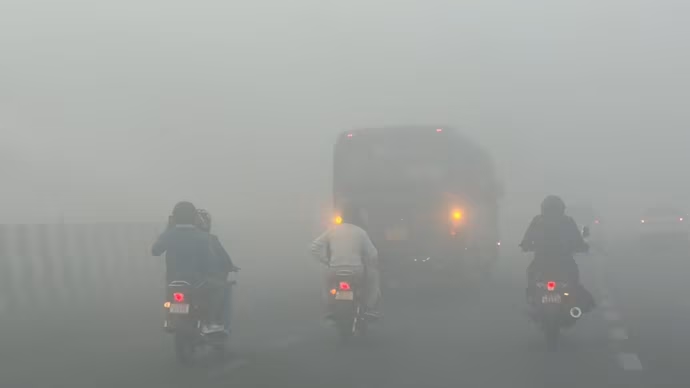Prime Minister Narendra Modi called for a Cabinet Committee meeting on Security on Oct 3 to discuss the intensifying hostilities in West Asia and its impact on trade and supply of petroleum among other issues.
The committee comprising the Prime Minister, the Home Minister, the Defense Minister, the Foreign Minister, the Finance Minister and the National Security Adviser, discussed the recent hostilities in the Middle East and Iran's ballistic missile attack on Israel.

They also discussed the impact on trade, navigation, and supply chains — especially the supply of oil, petroleum, and its products.
India had earlier expressed deep concern over the escalating conflict in the region which can have widespread implications and called for addressing all issues through dialogue and diplomacy.
Meanwhile, trade sources and analysts have warned that the intensifying West Asian violence, in addition to the port workers' strike on the US East Coast, could make logistics more difficult for Indian exporters and potentially harm shipments to the nation's largest markets.
According to Arun Kumar Garodia, chairman of the Engineering Export Promotion Council, the escalation of the Israel-Iran war and the bombings on Lebanon have not yet interfered with the regular movement of ships.
However, the US has presented a greater difficulty due to the workers' strike on the US East and Gulf coasts.
The airspace of the nations where the war is centered is restricted, resulting in longer shipment times and greater costs which will have an immediate effect on the movement of cargoes by air, he added.
Traffic congestion has already begun in the ports where the majority of India's exports enter the US. The strike began on Oct 1 at these ports.
The union went on strike after its contract expired in a disagreement over wages and task automation at ports ranging from Maine to Texas in the US.
The strike occurred at the peak of the holiday shopping season at 36 ports that handle over half of the cargo from ships entering and leaving the United States.
According to media reports, at least 45 cargo ships that were unable to unload had anchored outside the East Coast and Gulf Coast ports affected by the attack.
There is currently $34 billion worth of cargo headed for East Coast ports. Congestion caused by a one-day strike may last over a week, and if it lasts two weeks, it might even last until 2025.
Director General of the Federation of Indian Export Organizations, Ajay Sahai, said, “It is a matter of concern. Transportation costs are already high. If the strike continues for long, it will affect our exports.”
“The strike is less than 48 hours old and is already causing delays in unloading and processing of shipments from India, affecting goods like textiles, pharmaceuticals, and auto parts,” said co-founder of Global Trade Research Initiative Ajay Srivastava.
If the strike persists, cargo will have to be redirected to ports in Canada or the US West Coast, resulting in additional expenses and extended travel durations, potentially converting into higher pricing for consumers.
Due to delays and higher freight costs resulting from disruptions in the Red Sea route and issues obtaining specific types of containers, Indian exporters are already confronting these challenges.
Chairman of the CII National Committee on Exports and Imports, Sanjay Budhia, said, “Amid the global economic slowdown, this is adding to the worries of the Indian exporters to the US, India’s largest trading partner and biggest export destination.”
“Due to the crisis, exports will be delayed, which could lead to missed deadlines, contract penalties, and strained relationships with US buyers,” he added.
“The rates for shipping to the US have fallen 16-20% in the past three weeks now and might rise again,” Garodia said.
The United States remains India's largest export market, accounting for $77.5 billion in shipments in 2023-24, or 17% of overall exports. During that time, imports from the United States totalled $42.1 billion.
According to Garodia, the people who transported products under CIF (cost, insurance, and freight) arrangements will be the most affected because they won't be able to fulfill their commitment to delivering the items at a designated port.
When goods are sold via CIF, the seller is in charge of them until they arrive at the designated port. Additionally, the seller is responsible for export clearance, insurance, loading, and shipping costs.
“If operations at ports do not resume, then there is a possibility that ships may discharge the containers at other ports, which will create another problem of retrieving the cargo from those ports and reaching the sellers, adding to further delays and losses,” said Garodia.
“Indian manufacturers who rely on these ports for imports of raw materials and intermediate goods might also experience delays in receiving essential inputs, leading to slowdowns in production cycles and contributing to higher inflation,” said Budhia.

The regular sea route from Mumbai to the US East Coast takes 29 to 30 days, but the closing of the Suez Canal route has increased the transit time by up to 20 days.
According to 2023 data, the Red Sea route followed by the Suez Canal accounts for 50% of India's exports — worth Rs 18 lakh crore, and 30% of imports, worth Rs 17 lakh crore.
“The current workers’ strike will force ships to take a much longer route around the Horn of Africa and South America to reach the U.S. West Coast. This detour will increase travel time and costs by 2.5 to 3 times, adding thousands of extra kilometers for internal transport within the US,” Ajay Srivastava said.

















